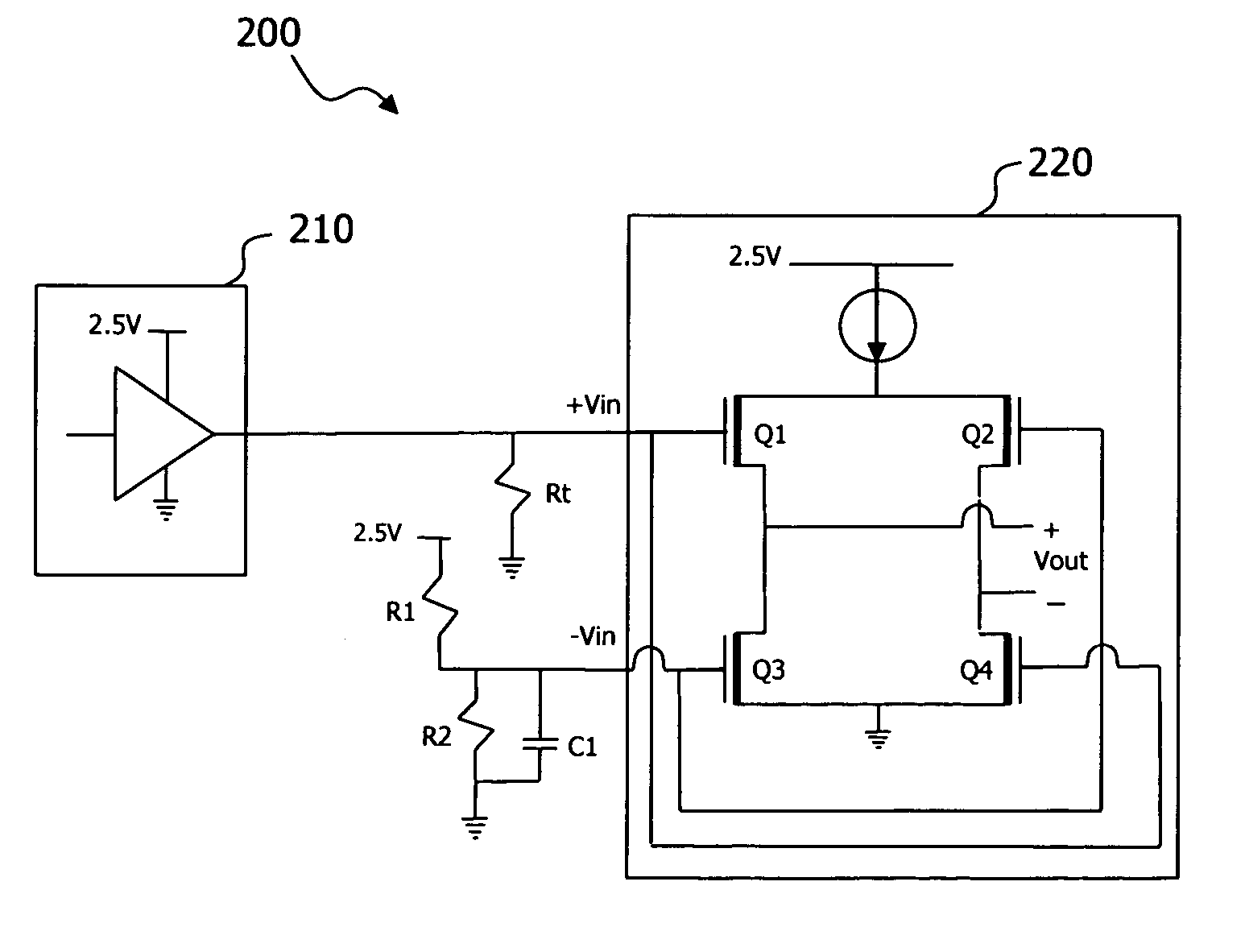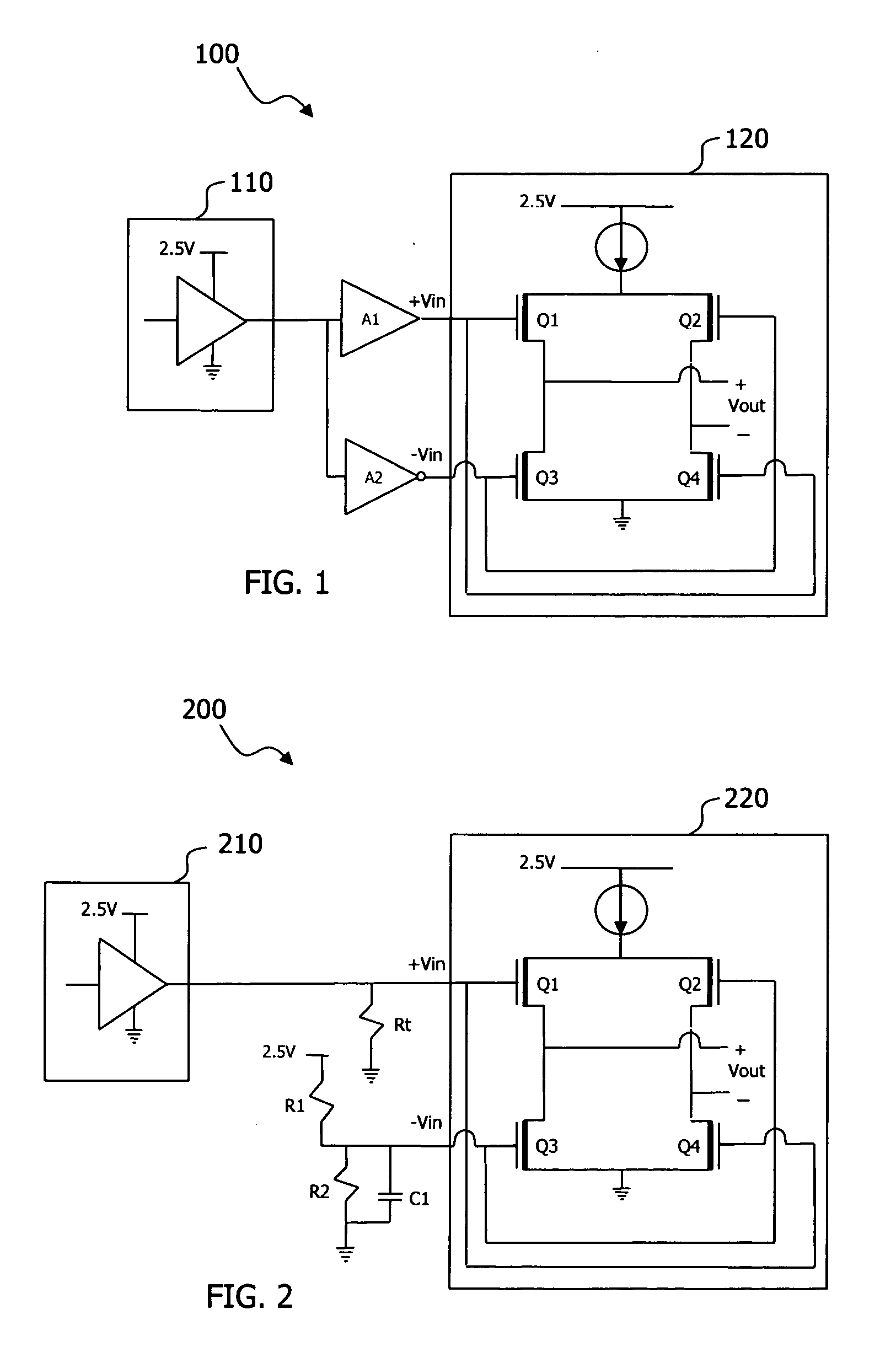Single-ended CMOS signal interface to differential signal receiver loads
a signal interface and receiver technology, applied in the direction of voltage/current interference elimination, pulse technique, reliability increasing modifications, etc., can solve the problems of signal delay, output signal from the cmos circuit can also experience a mismatch or phase shift or misalignment with the lvds load, price increase, etc., to achieve lower delay, less jitter, and lower cost
- Summary
- Abstract
- Description
- Claims
- Application Information
AI Technical Summary
Benefits of technology
Problems solved by technology
Method used
Image
Examples
Embodiment Construction
[0014] The particular values and configurations discussed in these non-limiting examples can be varied and are cited merely to illustrate embodiments of the present invention and are not intended to limit the scope of the invention.
[0015] As stated in the background, the introduction positive and negative drivers between CMOS and LVDS loads can cause a signaling delay. The output signal from the CMOS circuit can also experience a mismatch or phase shift or misalignment with the LVDS load during signaling.
[0016] Referring to FIG. 2, a simplified circuit 200 illustrates a solution to problems previously encountered by CMOS to differential circuit interfaces. The solution introduces two resistors, labeled R1 and R2, and a capacitor, C1, in place of the two amplifiers. The three circuit elements, R1, R2 and C1, are used to fix the voltage on the negative input of the LVDS. When the negative input on the LVDS is fixed at a certain bias voltage, then the LVDS input will receive the diff...
PUM
 Login to View More
Login to View More Abstract
Description
Claims
Application Information
 Login to View More
Login to View More - R&D
- Intellectual Property
- Life Sciences
- Materials
- Tech Scout
- Unparalleled Data Quality
- Higher Quality Content
- 60% Fewer Hallucinations
Browse by: Latest US Patents, China's latest patents, Technical Efficacy Thesaurus, Application Domain, Technology Topic, Popular Technical Reports.
© 2025 PatSnap. All rights reserved.Legal|Privacy policy|Modern Slavery Act Transparency Statement|Sitemap|About US| Contact US: help@patsnap.com


